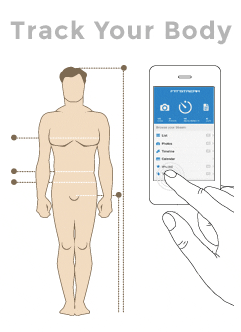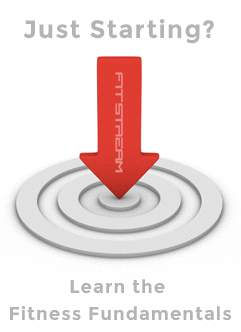How to do the Short Bridge Exercise
Please note that full bridges are not suitable for beginners and the instructions below are for the Short Bridge, which is the most common starting point for most beginners. See the Bridge Progression Exercises for the development path up to a full bridge.
- Lie on your back with hands by your side, knees bent and feet flat on the floor (under the knees)
- Press your feet into the floor as you tighten your butt and abs, and lift your hips up to create a straight line from knees to shoulders
- Hold the position in good form (tense the core, trying to pull your bell button back toward the spine) aiming for 20-30 seconds
- Lower yourself back down to the floor
Bridge Notes:
- If your hips begin to sag or drop, lower yourself back to floor
Bridge Exercise Guide
The bridge is an excellent core body stability exercise and is effective for isolating and strengthening the gluteus (butt) and hamstrings (back of the upper leg). It's a popular rehabilitation exercise used to improve core and spinal stabilization.
This often overlooked exercise has a huge number of physical benefits;
- Develop every muscle in the back and strengthen the spinal muscles
- Condition the spine in preparation for heavy and explosive movements
- Stretches out the whole body
- Can improve posture and reduce back pain
Bridge Progression Exercises
The steps below outline a progression path towards developing your full bridge position. You should start wherever your current level is and then work up to the more difficult variations as your strength and flexibility increases.
Aim to train for the bridge 2-3 times per week but even just inserting the exercise into your routine once a week is beneficial.
Step 1. Short Bridges
An excellent starting exercise for beginners looking to learn the full bridge or for people with previous back injuries. Short Bridges will gently work the back, butt, and hamstring muscles.
Instructions: See above
Frequency: Two sets x 20-25 reps 2-3 times per week
Step 2. Straight Bridges
Straight bridges will further develop the shoulder, back, butt and leg muscles on the way to building your full bridge. The key difference between this position and the short bridge is that the arms are supporting the body from the ground and the legs are extended straight out.
Instructions:
- Lie on your back with legs straight
- Place hands on the floor outside of your hips
- Push up onto your hands, lifting the hips from the floor and squeezing the legs
- Hold the position for a second before lowering back down
Frequency: Two sets x 20-25 reps 2-3 times per week
Step 3. Elevated Bridges
Elevated bridges raise the hands from the ground and reduce the severity of the bridge angle to make it easier to hold.
Instructions:
- Find a bench or elevated platform that's around knee height or higher and sit in front of it
- Whilst facing away from the platform place the hands behind the head and gripping onto the edge
- Press the body up into the bridge position, arching the back, raising the hips and straightening the arms.
- Hold the position before lowering back down
Frequency: Two sets x 15 reps, 2-3 times per week
Step 3. Full Bridges
You've made it! Here's our guide to the full bridge;
Instructions:
- Lie on your back with knees bent and hands by the sides of the head
- Push up at the hands and feet, raising the hips, arching the back, and squeezing the core and leg muscles
- Hold the position before lowering back down
Frequency: Two sets x 15 reps, 2-3 times per week

Advanced Bridges
if you've now mastered the bridge exercise here are some advanced variations that you can consider;
- One-legged Bridge
- Bridge Walk Downs - Involves walking the hands the wall and into a full bridge
- Bridge Walk Ups - Involves performing the Bridge Walk Down and then walking the hands back up the wall to the starting position
 Fitstream AppTrack your fitness progress and see the difference for yourself with our free app
Fitstream AppTrack your fitness progress and see the difference for yourself with our free app













